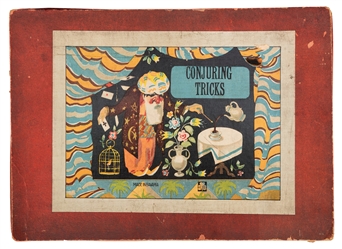
At the Palais-Royal he created a sensation with his “floating boy” trick, achieved with the use of a concealed metal support structure. He performed on a bare stage in evening dress instead of the wizardlike costumes other magicians used at the time.

He later worked on his mechanical devices in Paris and was a magician at the Palais-Royal (1845–55). (He later added “Houdin,” which was his wife’s family name.) Interested in magic from boyhood, he was trained as a watchmaker.

He then supplied the audience with a plausible explanation of the technical procedures involved in the trick. Although he did not do away with mechanical devices, he usually employed what appeared to be common and familiar objects to create an illusion. Robert-Houdin exposed “fakes” and magicians who relied on supernatural explanations for their feats. He was the first magician to use electricity in his magic act, and he also improved the signaling method for the “thought transference” trick. French magician Jean-Eugène Robert-Houdin is considered to be the father of modern stage magic.


 0 kommentar(er)
0 kommentar(er)
